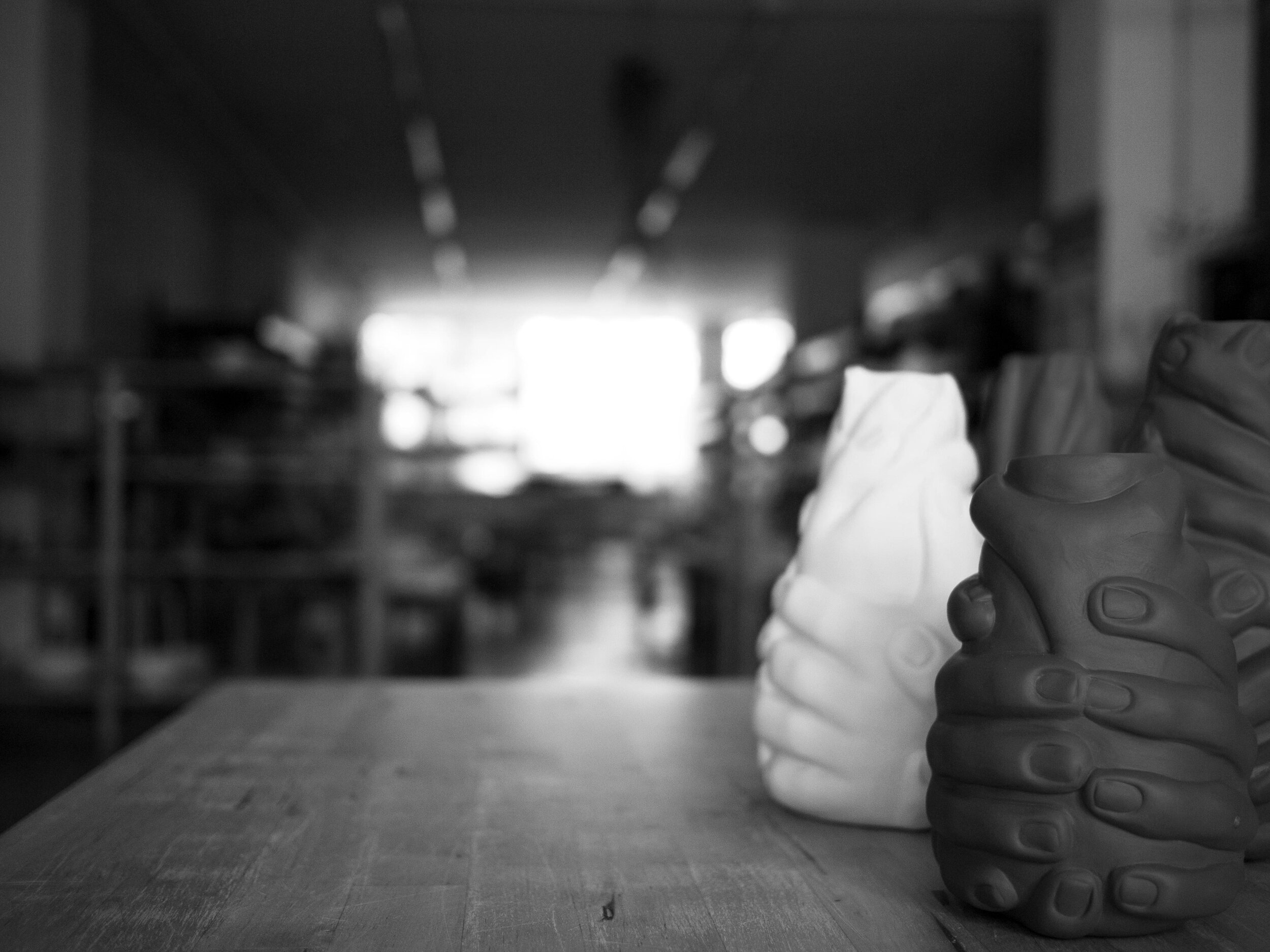How things come to be? Ideas and techniques.
“Oh Baby Hold Me Tight” vases in my studio in Barcelona.
How things come to be?
I know that this often interests people, How do you come up with ideas? The answer can sound rather disappointing: I don’t know. I really don’t. And it’s not like a divine inspiration that comes down on you out of the blue. It doesn’t feel like it at least. More like, you are working, or eating, or sleeping (this is very frustrating, as by morning half of the ideas disappears) and you’re like, “hmmm, I wonder what would happen if I try this?”
If I try to break up the whole process from a thought to a thing, it will look something like this.
A somewhat amorphous idea comes to my mind, seemingly out of nowhere, usually at night. I juggle it in my mind for a while. Refine imaginary details until it feels right. It's hard to explain what "right" means, it must feel totally mine and free of internal contradictions. I leave it there, on a mental shelf, for a few days or sometimes even for a few weeks or months. After marinating I try it out in clay. I make my objects entirely by hand. Build the shape up, layer by layer, by adding coils one on top of the other. Until I arrive at the basic form that I have in mind. Then I start to sculpt it by adding and carving out the body of the object. Lastly, I impress my maker’s mark at the bottom.
Some of my work is done differently. I make a very thin “crepe” by spreading a lump of clay. Then I fold it into a round shape. This is very intuitive and guided by the material itself; I barely have any control over how it eventually folds. This allows me to create thin fabric-like bowls, each completely unique.
The second step is to sand the object, once it's dry enough, in order to achieve a nice smooth surface. Then I fire it in the kiln at around 950 degrees Celsius. This takes a few days. When it’s fired and has cooled down, I sand it again with various grains of sandpaper to get rid of all imperfections. Next, I decide if I want to glaze the entire piece, glaze it partially or leave it totally unglazed.
After that, it goes back into the kiln for the second round of firing at around 1250 degrees Celsius. It comes out solid and water-resistant in its final appearance - the one it will have for almost “forever”, much longer than I am able to comprehend. This totality of a ceramic object comes with a great responsibility. So I try to make sure to recycle as much as I can during the phases that come before this final stage and only fire pieces that are worthy, at least for me.


